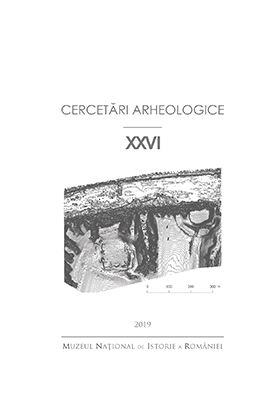Recent Archaeological Investigations in the Meseș Gate pass (Dacia Porolissensis). The Roman Frontier Watchtower from Poguior Hill
Recent Archaeological Investigations in the Meseș Gate pass (Dacia Porolissensis). The Roman Frontier Watchtower from Poguior Hill
Author(s): Horaţiu Cociș, Ioan BejinariuSubject(s): Archaeology
Published by: MUZEUL NAȚIONAL DE ISTORIE A ROMÂNIEI
Keywords: Roman frontier; Dacia Porolissensis; Poguior Hill; watchtower; archaeological excavation;
Summary/Abstract: The Meseș Gate Pass represented a key crossing point used in different historical periods, from the Bronze Age up to the 20th century, by various populations and for different purposes. If the Prehistoric, the La Tène and the medieval communities controlled the pass by the means of strategic fortifications, the Romans integrated it in a larger and more organized system called limes-the frontier of the Roman Empire. During the existence of the province of Dacia (Porolissensis), the Meseș Gate Pass was organized as one of the main transit areas within the north-western frontier, being fortified with a linear fortification (a wall), surveyed by two watchtowers and controlled by a valley fortlet. In this article we will focus on the watchtower from Poguior Hill, a key element of the Roman frontier organization from the Meseș Gate Pass which was the subject of a recent archaeological excavation.
Journal: Cercetări Arheologice
- Issue Year: XXVI/2019
- Issue No: 1
- Page Range: 83-102
- Page Count: 20
- Language: Romanian

